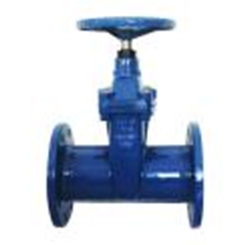Nov . 08, 2024 16:00 Back to list
building cable wire
Building Cable Wire A Comprehensive Overview
In the modern world, the demand for efficient communication and dependable electrical power has transformed the landscape of technology and infrastructure. At the core of these advancements lies a fundamental component building cable wire. Understanding the intricacies of building cable wire is essential for anyone involved in construction, electrical engineering, or telecommunications. This article delves into the types, applications, and best practices associated with building cable wire.
Building cable wire refers to a variety of insulated cables designed for installation in buildings, structures, and other environments where it is essential to provide power or communication to various systems. These cables are designed to meet specific safety standards and regulatory requirements. Various types of cables can be classified based on their applications, such as electrical wiring, data transmission, and control systems.
One of the most common types of building cable wire is Non-Metallic Sheathed Cable (NM). This type of cable, often referred to as Romex, is widely used in residential wiring. It consists of two or more insulated conductors and a ground wire, all encased in a protective plastic sheath. NM cable is favored for its ease of installation and cost-effectiveness, making it an ideal choice for residential construction.
For commercial buildings, more robust types of cables, such as Armored Cable (AC), may be employed. Armored cable provides additional protection against physical damage due to its outer metal sheath. This makes it suitable for environments where cables may be exposed to mechanical stress or temperature variations, ensuring reliability and longevity.
building cable wire

Another significant category is the Low-Voltage Cable, which is used for applications like fire alarms, security systems, and audio/video transmission. These cables are designed to operate at voltages less than 50 volts and typically come in multiple conductors to accommodate various functionalities. For instance, Cat 5e or Cat 6 cables, which are essential for network communications, fall into this category. They facilitate high-speed internet access and are vital for data centers and office environments.
When it comes to selecting the appropriate building cable wire, several factors must be considered. The type of application is primary; different cables are designed for specific uses, with varying voltage compatibility, insulation types, and environmental ratings. Additionally, local building codes and regulations play a critical role in determining which cables may be legally used in a given installation.
Another essential factor is the environment where these cables will be installed. Cables for outdoor use must be resistant to UV radiation and moisture, while those for indoor use may emphasize fire resistance. Understanding the environmental conditions helps ensure safety and compliance with regulations.
Installation practices are equally as crucial. Proper techniques in laying and securing building cable wire can prevent potential hazards such as short circuits or electrical fires. For instance, using appropriate staples or cable ties to secure wires and maintaining a tidy workspace can increase both safety and efficiency. Furthermore, procedures such as avoiding excessive bending or twisting of cables must be followed to preserve their integrity.
In summary, building cable wire serves as a vital component of our modern infrastructure, enabling reliable power distribution and efficient communication systems. Its types, applications, and installation practices are critical to ensuring safety and functionality in both residential and commercial environments. By understanding these elements, contractors, engineers, and homeowners alike can make informed decisions that contribute to a safer and more efficient built environment. As we continue to evolve technologically, the importance of quality building cable wire will undoubtedly remain paramount.
Share
-
Reliable Wafer Type Butterfly Valves for Every IndustryNewsJul.25,2025
-
Reliable Flow Control Begins with the Right Ball Check ValveNewsJul.25,2025
-
Precision Flow Control Starts with Quality ValvesNewsJul.25,2025
-
Industrial Flow Control ReliabilityNewsJul.25,2025
-
Engineered for Efficiency Gate Valves That Power Industrial PerformanceNewsJul.25,2025
-
Empowering Infrastructure Through Quality ManufacturingNewsJul.25,2025